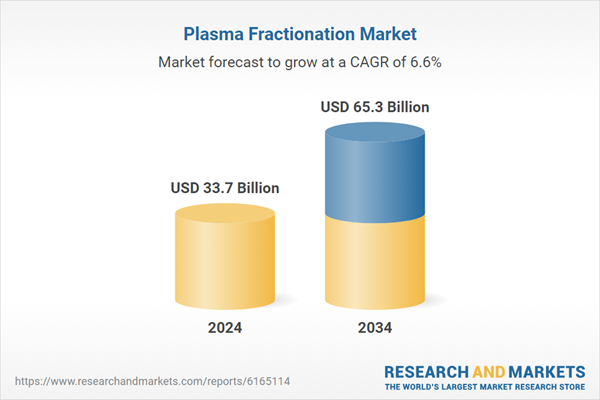Plasma proteins such as albumin and coagulation factors are essential in the treatment of multiple disorders. The growing frequency of autoimmune and inherited diseases is contributing to the broader use of these therapies. Increased R&D investments are further driving innovations in plasma-based treatments across diverse healthcare segments. From managing immune deficiencies to treating bleeding disorders, the applications of fractionated plasma components are expanding significantly, helping to fuel consistent demand through the forecast period.
The immunoglobulins segment accounted for a 46.8% share in 2024, reflecting strong demand for plasma-based therapies used in treating a broad range of health conditions. The segment is witnessing a surge in usage driven by a growing number of immunological and neurological diseases. Increasing off-label application of IVIg in clinical settings and its wider adoption for managing conditions like Guillain-Barré syndrome and Kawasaki disease are contributing to its dominant position in the market and supporting sustained growth.
The cold ethanol fractionation segment held a 47.9% share in 2024. The technique remains a standard in large-scale plasma processing facilities due to its efficiency, cost-effectiveness, and ability to yield high-purity plasma proteins. It is favored for extracting multiple protein types simultaneously and offers an optimal mix of safety and extraction performance. Its use is especially widespread for isolating key plasma components such as immunoglobulins and albumin.
U.S. Plasma Fractionation Market was valued at USD 10.4 billion in 2024. The country maintains a leadership position in this sector due to strong healthcare infrastructure, high awareness of plasma-based therapies, and widespread availability of donation centers. Increasing prevalence of chronic conditions and the routine use of immunoglobulins and coagulation factors in clinical care have amplified the demand for plasma-derived products. As more patients require long-term therapies, the need for reliable plasma protein supply continues to climb, bolstering U.S. market strength.
Key companies active in the Plasma Fractionation Market include Takeda, Kedrion Biopharma, Grifols, Prothya Biosolutions, GC Biopharma, SK Plasma, Kamada Pharmaceuticals, LFB Group, VIRCHOW BIOTECH PRIVATE LIMITED, Japan Blood Products Organization (JB), Intas Pharmaceuticals, Octapharma, CSL, and Taibang Biologic Group. To secure a strong foothold in the Global Plasma Fractionation Market, leading companies are implementing strategies focused on capacity expansion, strategic collaborations, and innovation in processing methods. They are increasing investments in research and development to explore new therapeutic applications of plasma-derived proteins. Many firms are also forming long-term agreements with healthcare providers and government agencies to ensure consistent demand and supply.
Comprehensive Market Analysis and Forecast
- Industry trends, key growth drivers, challenges, future opportunities, and regulatory landscape
- Competitive landscape with Porter’s Five Forces and PESTEL analysis
- Market size, segmentation, and regional forecasts
- In-depth company profiles, business strategies, financial insights, and SWOT analysis
This product will be delivered within 2-4 business days.
Table of Contents
Companies Mentioned
The key companies profiled in this Plasma Fractionation market report include:- LFB Group
- CSL
- GC Biopharma
- Grifols
- Intas Pharmaceuticals
- Japan Blood Products Organization (JB)
- Kamada Pharmaceuticals
- Kedrion Biopharma
- Octapharma
- Prothya Biosolutions
- SK Plasma
- Taibang Biologic Group
- Takeda
- VIRCHOW BIOTECH PRIVATE LIMITED
Table Information
| Report Attribute | Details |
|---|---|
| No. of Pages | 140 |
| Published | August 2025 |
| Forecast Period | 2024 - 2034 |
| Estimated Market Value ( USD | $ 33.7 Billion |
| Forecasted Market Value ( USD | $ 65.3 Billion |
| Compound Annual Growth Rate | 6.6% |
| Regions Covered | Global |
| No. of Companies Mentioned | 15 |









